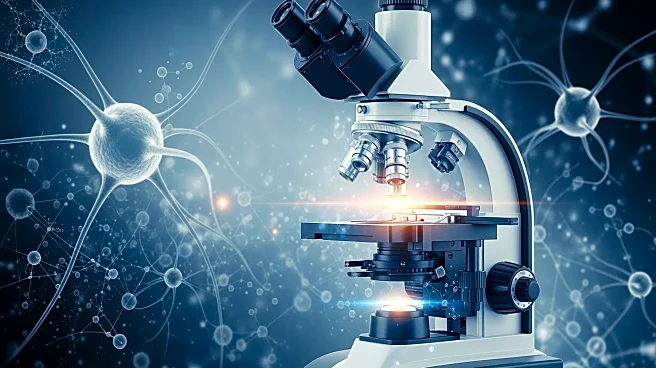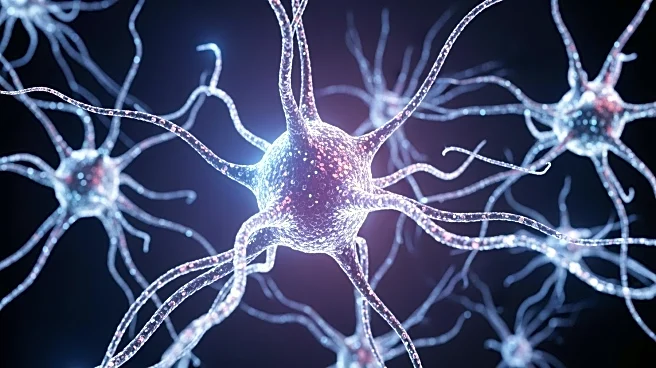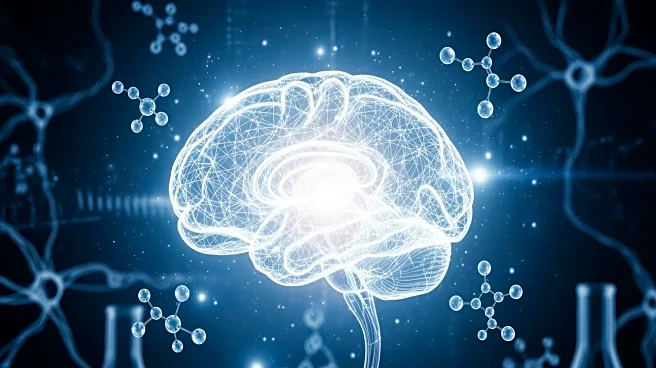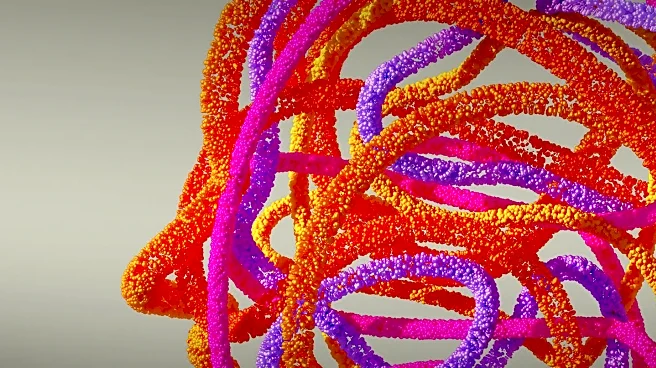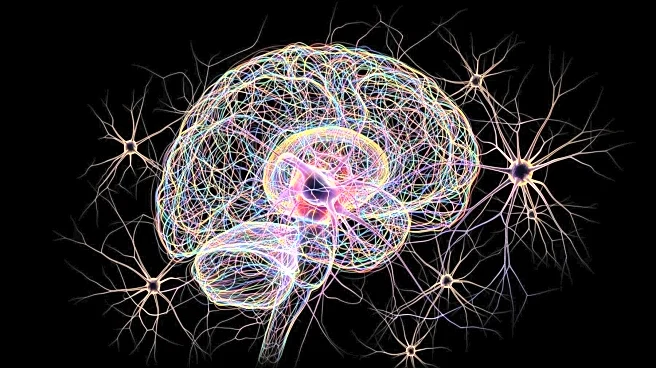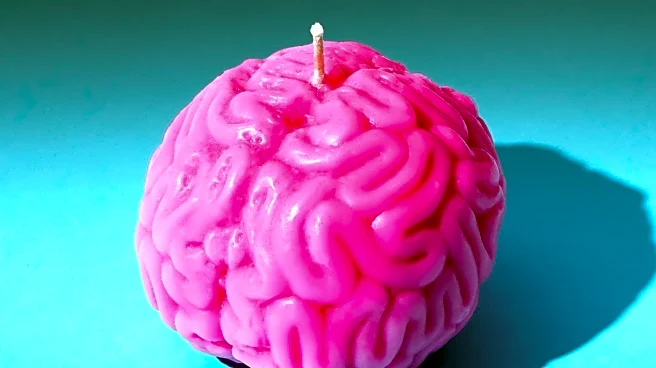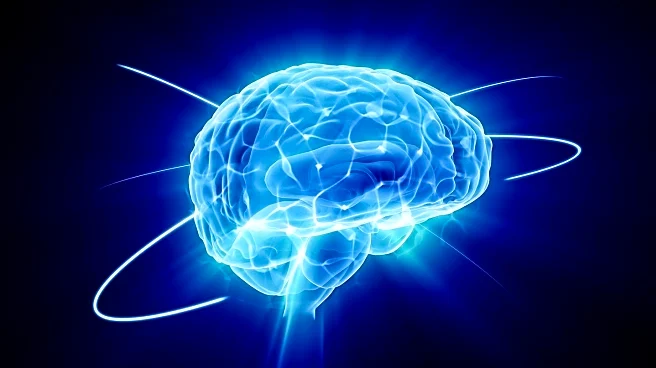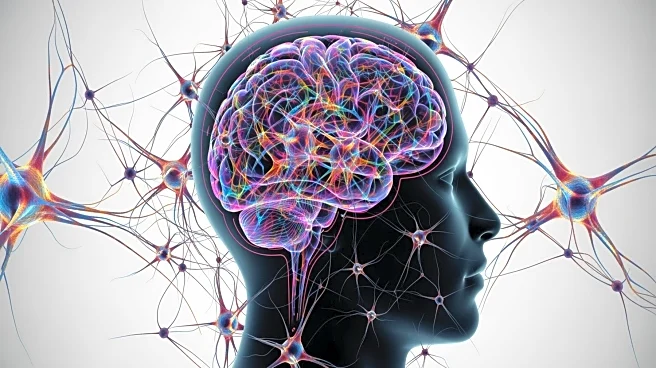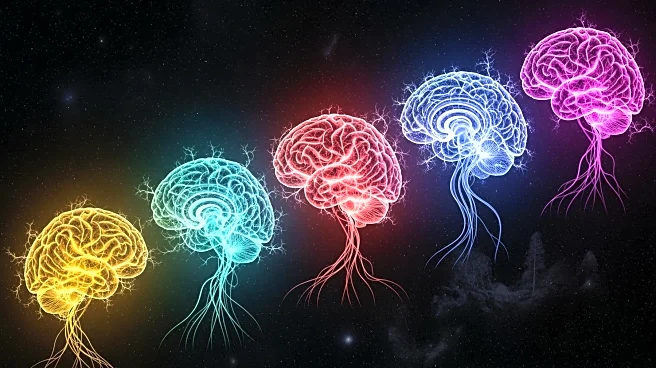What's Happening?
Researchers at the University of Science and Technology of China have developed a new biophysical model to understand synaptic vesicle (SV) exocytosis, a critical process in neuronal communication. The
study, published in Science, introduces the 'kiss-shrink-run' mechanism, which reconciles the long-standing debate between the 'kiss-and-run' and 'full collapse' theories of neurotransmitter release. Using a time-resolved, cellular cryo-electron tomography (cryo-ET) platform, the team captured over 1,000 tomograms of intact excitatory synapses at intervals from 0 to 300 milliseconds post-action potential. This imaging allowed them to reconstruct the full timeline of SV exocytosis and rapid recycling, revealing a hybrid process with a critical shrinking phase.
Why It's Important?
Understanding the 'kiss-shrink-run' mechanism is crucial for advancing knowledge in neuronal communication, which underpins learning, memory, and neurodegenerative diseases. The fidelity and efficiency of synaptic transmission are foundational to brain function, and this new model could unlock therapeutic avenues for treating neurological disorders. The cryo-ET technique sets a new standard for in situ analysis of membrane dynamics and molecular interactions, offering unmatched spatiotemporal resolution. This breakthrough could lead to significant advancements in neuroscience research and potential applications in medical treatments.
What's Next?
The introduction of the 'kiss-shrink-run' mechanism opens new doors for studying synaptic plasticity and brain function. Researchers may explore how this mechanism impacts various neurological disorders and develop targeted therapies. The cryo-ET technique could be applied to other areas of cellular biology, enhancing the understanding of complex biological processes. Further studies may focus on the implications of this mechanism in different types of synapses and its role in cognitive functions.
Beyond the Headlines
The discovery of the 'kiss-shrink-run' mechanism highlights the importance of interdisciplinary approaches in scientific research, combining optogenetic stimulation with advanced imaging techniques. This development underscores the potential for innovative methodologies to resolve longstanding scientific debates and contribute to a deeper understanding of complex biological systems.
